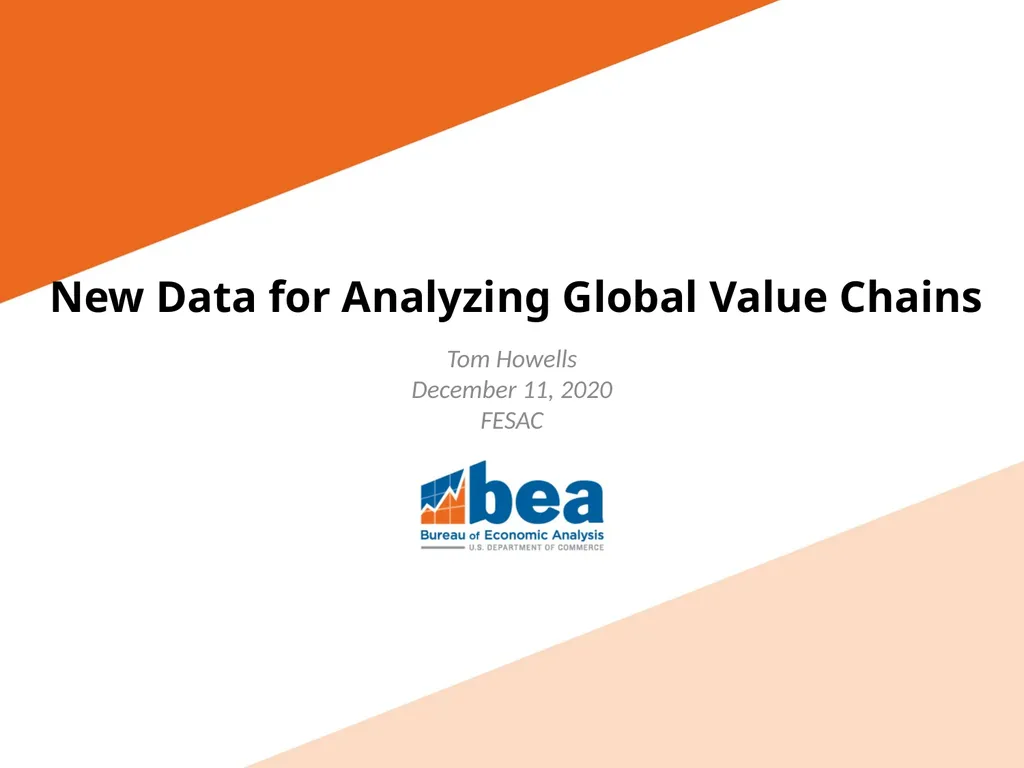
New Data for Analyzing Global Value Chains Tom
Author: test | Published: 2025-05-24
Description: New Data for Analyzing Global Value Chains Tom Howells December 11, 2020 FESAC Overview Motivation International Engagement Single-Country Trade in Value Added (TiVA) Statistics Extensions 1242020 2 Motivation TiVA statistics provide
Download Presentation
Download the PPT/PDF: Download
Transcript:
Loading transcript…